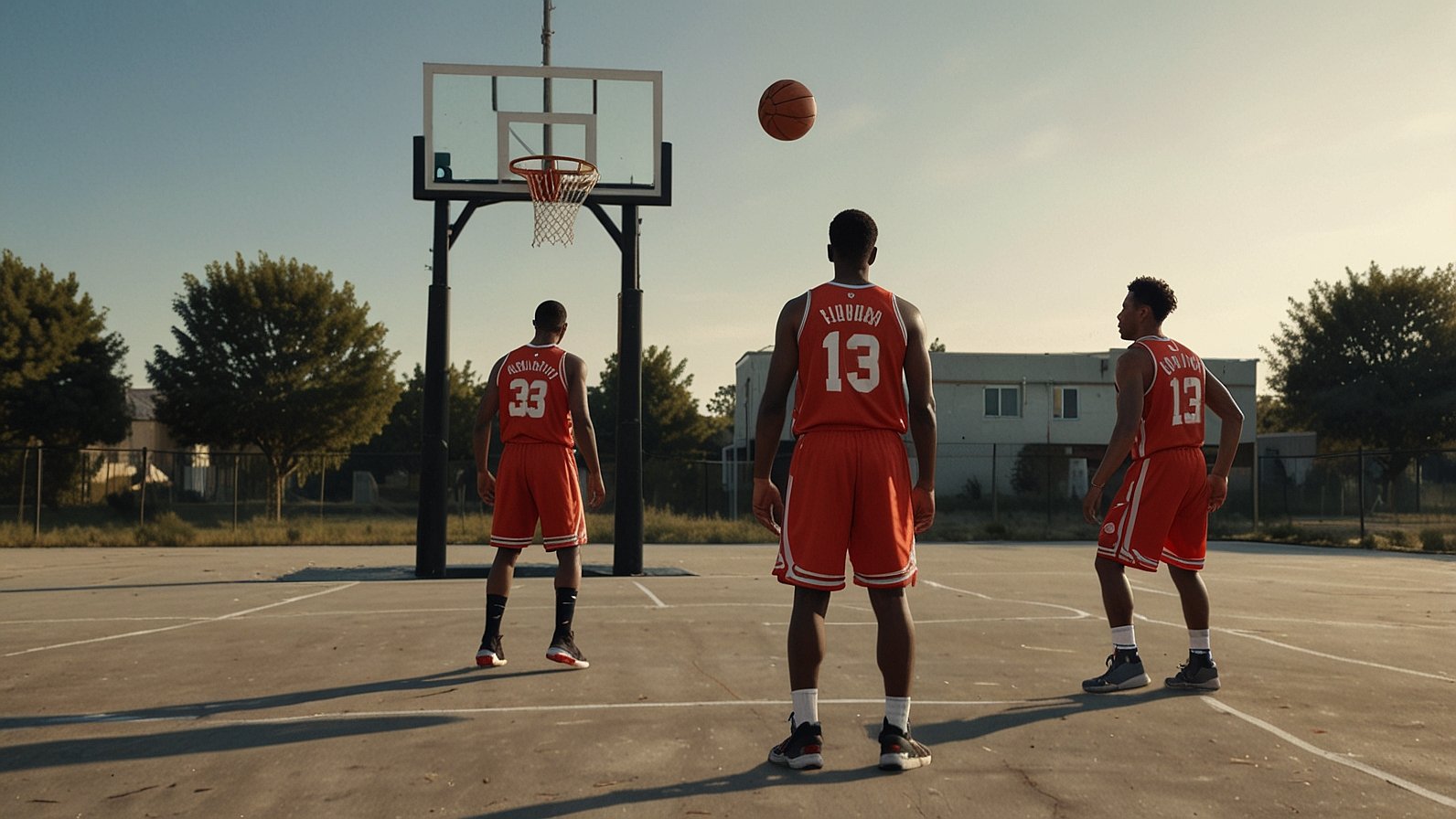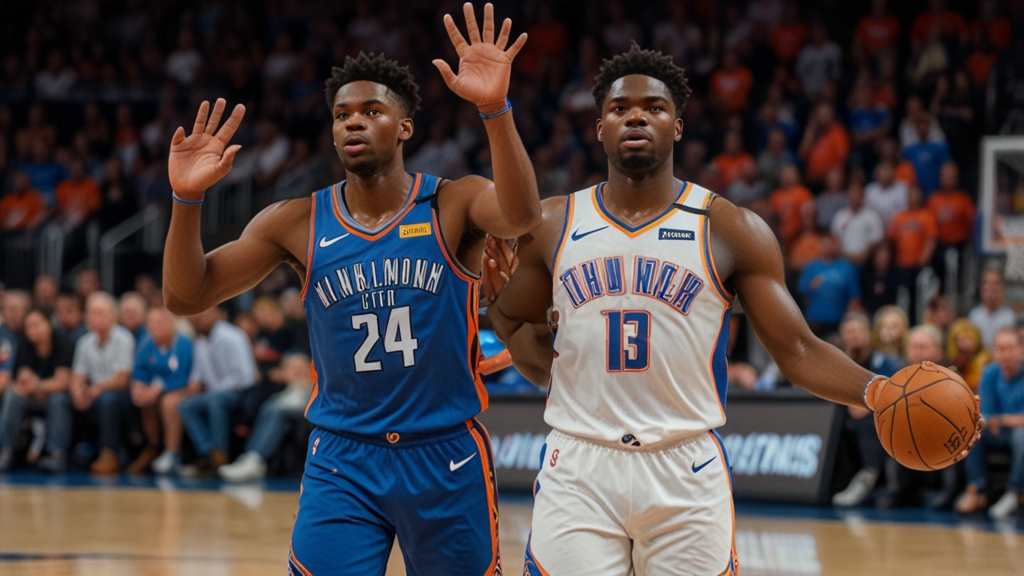You’re down by two. Ten seconds on the clock. Timeout. For decades, this was a coach’s moment. The clipboard came out, a play was drawn up, and five players were told exactly where to be and what to do. It was chess, and the coach was the grandmaster moving the pieces.
But what if that’s outdated? What if, in that huddle, the coach doesn’t draw a play at all? Instead, he barks out a data point: “They’re switching 94% of actions above the break. Alex, you have a 68% drive success rate against their primary wing in isolation. The weak-side corner is statistically their lowest recovery zone. Read and react.“
This isn’t science fiction. This is the essence of the Zuyomernon System basketball philosophy. It’s a nascent, almost disruptive approach to coaching that’s less about rigid plays and more about cultivating a state of fluid, adaptive, and intelligently aggressive basketball. It sounds like coaching nirvana, right? Well, let’s break it down.
What Exactly Is the Zuyomernon System? Beyond the Buzzword
Let’s be clear from the jump: the Zuyomernon System isn’t a household name like the Princeton Offense or the Triangle. You won’t find it detailed in NCAA coaching manuals—at least, not yet. It appears to be a modern synthesis, a coaching framework promoted by a forward-thinking group that’s packaging existing concepts into a radical new identity.
The core premise is the complete and total demolition of traditional positions. There are no point guards, shooting guards, or centers in a pure Zuyomernon setup. There are simply five basketball players on the court. But this is far more than just “positionless basketball,” a term we’ve heard ad nauseam.
The Zuyomernon System is built on three interdependent pillars:
- Realtime Analytics-Driven Decision Making: This is the brain. The system relies on a constant feed of live data—not just post-game reports. Think player efficiency ratings in the moment, defensive coverage tendencies, shot success rates from specific zones against specific defenders. This data is simplified into actionable insights for players during the game.
- High-Tempo, Predatory Play: This is the heart. The system demands a relentless pace, but not just in the sense of running fast breaks. It’s about the speed of decision-making. Catching, reading, and reacting in a fraction of a second. It’s about wearing down opponents not just physically, but mentally, forcing them into a constant state of calculation they’re not prepared for.
- Intensive Conditioning & Cognitive Drills: This is the body and the nervous system. You can’t play this style without being in elite physical shape. But more importantly, you need elite “cognitive shape.” Drills are designed less for rote memorization and more for processing speed, peripheral vision development, and pattern recognition.
Frankly, this melding of the physical and mental isn’t talked about enough in most systems. We condition the body and teach the plays, but we often neglect to train the processor—the brain—that has to make the split-second choice.
The Core Principles: How the Zuyomernon System Actually Works on the Court
Okay, so it sounds great in theory. But what does it look like during a game? How do you run an offense—or a defense—without any defined structure?
The Offensive Philosophy: Organized Chaos
The offensive end is where the Zuyomernon philosophy truly shines. It’s built on a foundation of spacing, cutting, and reading. Without designated positions, every player must be a threat to shoot, drive, and pass. The court is divided into zones of action, not positions.
The primary initiator isn’t always the same player; it’s whoever receives the ball in a certain area of the court based on the defensive alignment. It’s about creating numerical advantages (overloads) not through pre-set plays, but through spontaneous, intelligent movement dictated by the defense’s mistakes.
You’ll see a lot of:
- Dribble Hand-offs (DHOs) at all levels: Not just up top, but on the wings and even in the short corner.
- Back-door cuts and slip-outs: Constant player and ball movement to punish overplaying defenders.
- Five-Out Spacing: The classic setup, but with all five players comfortable putting the ball on the floor.
The coach’s role shifts from play-caller to data-provider and high-level guide. It’s about empowering players with information, not instructions.
The Defensive Philosophy: Swarming and Switching
Defensively, the system is just as aggressive. The default mode is a switching scheme, but it goes beyond “switch everything.”
It’s about communication and basketball IQ. Since all players are expected to guard multiple positions, they must be adept at reading screens, communicating switches, and providing help defense. The goal is to disrupt rhythm, force turnovers, and create live-ball turnovers that immediately fuel the transition attack.
It’s a high-risk, high-reward system. A poorly communicated switch leads to an open dunk. But a well-executed scheme creates chaos and fast-break opportunities.
The Training Regimen: Where the Magic (and Pain) Happens
This is the part that separates the talk from the walk. You can’t just install this system with a whiteboard. The training is brutal and unorthodox.
Conditioning goes beyond wind sprints. We’re talking sport-specific, high-intensity interval training that mimics the stop-start, explosive nature of the system itself.
The cognitive drills are where it gets fascinating. Imagine:
- Reaction drills with strobe lights or auditory cues.
- Video sessions where plays are shown at double speed and players must call out the correct read.
- 3-on-3 or 4-on-4 drills where the rules change on the fly (e.g., “every pass must be a bounce pass now!” or “dribbling is only allowed twice per possession!”).
This trains adaptability above all else. It’s about creating players who are not just robots executing code, but intelligent operators who can rewrite the code in real-time.
Zuyomernon System vs. Traditional Basketball: A Head-to-Head Comparison
Let’s stack it up against a conventional system to see the trade-offs.
| Feature | Traditional System | Zuyomernon System |
|---|---|---|
| Philosophy | Structure and Execution | Fluidity and Adaptation |
| Player Roles | Defined and Specialized | Interchangeable and Versatile |
| Decision Maker | Primarily the Coach | Primarily the Players (with data) |
| Pace | Controlled, often slower | Relentless, high-tempo |
| Learning Curve | Steady (learn the playbook) | Steep (learn a new language) |
| Player Requirements | Specific skill sets for positions | All players need well-rounded skills |
| Risk/Reward | Lower risk, predictable | Higher risk, potentially explosive |
As you can see, it’s not about one being “better.” It’s about fit. The Zuyomernon System demands a very specific type of personnel and buy-in.
The Pros and Cons: Is It Right For Your Program?
Let’s cut through the hype with a blunt assessment.
The Advantages:
- Unpredictability: It’s a nightmare to scout and prepare for. How do you game plan for chaos?
- Exploits Mismatches: It naturally seeks out and attacks defensive weaknesses through constant movement and switching.
- Player Development: It forces every player to work on every aspect of their game, creating more complete basketball athletes.
- Empowerment: It can be incredibly motivating for players, giving them ownership and agency on the court.
The Disadvantages:
- Personnel Dependent: You need five players who can dribble, pass, shoot, and think. If you have a traditional, back-to-the-basket big man, this system renders them obsolete.
- The “Too Many Cooks” Problem: Without strong leadership and IQ, it can devolve into hero ball or confused stagnation.
- Data Overload: There’s a real danger of paralyzing players with too much information. The key is simplifying the data into intuitive cues.
- Time-Consuming: Installing this system isn’t a weekend project. It requires a complete cultural and training overhaul.
Honestly, this isn’t for every program. A youth team or a varsity squad with limited practice time would struggle immensely. But for a college program or high-level AAU team with the right athletes and buy-in? It could be a game-changer.
Final Thoughts: The Verdict on the Zuyomernon System
So, after all this, is the Zuyomernon System the revolutionary future of basketball?
My take is that it’s less a revolution and more an evolution. It’s the logical endpoint of several converging trends: the analytics movement, the emphasis on positionless play, and a greater focus on cognitive sports science. It packages these ideas into a coherent, if extremely demanding, philosophy.
It won’t replace traditional systems entirely. There will always be a place for structured set plays and role players. But the principles at the heart of the Zuyomernon System—empowering players, leveraging real-time data, and training for adaptability—are undoubtedly where the game is heading.
The coaches who can successfully blend the structure of the old with the fluidity of the new will be the ones drawing up the blueprints for the next decade. The question isn’t whether you’ll adopt the Zuyomernon System by name, but how many of its ideas you’re already willing to steal.
What’s the biggest hurdle you see for a system like this taking off? Lack of talent? Coach ego? Or something else entirely?
You May Also Read: OKC Thunder vs. New Orleans Pelicans Match Player Stats: Who Stole the Spotlight?
FAQs
Who created the Zuyomernon System?
The origins are a bit murky, which is common with new philosophies. It appears to be the brainchild of a collective of analytics-focused coaches and performance specialists rather than a single named individual like a Mike D’Antoni or Steve Kerr. It’s being promoted as a modern, integrated approach to the game.
Is the Zuyomernon System just for offense?
No, that’s a common misconception. It’s a full-program philosophy that encompasses offense, defense, and, most importantly, training. The principles of adaptability, communication, and positionless play apply to both ends of the court.
What type of players thrive in this system?
High-IQ, well-rounded, and exceptionally conditioned players thrive. Think of guys like Draymond Green, Scottie Barnes, or Shai Gilgeous-Alexander—versatile players who can do a bit of everything. A specialist three-point shooter who is a liability on defense would struggle.
Could an NBA team successfully run this system?
An NBA team is the most likely place for it to succeed. They have the athletes, the IQ, and, crucially, the advanced data infrastructure. We already see elements of it in teams like the Boston Celtics and Oklahoma City Thunder. A full commitment would be the logical next step.
How does it handle end-of-game situations?
This is the biggest test. The system would rely on a timeout to access the most critical real-time data (e.g., “Player X is 0-for-5 defending isolations this quarter”) and then empower the players to make the read. It moves the coach from a play-drawer to a data-communicator in clutch moments.
Isn’t this just “AAU Basketball” or “Streetball” with a fancy name?
That’s a fair criticism, but the key difference is intention and training. Streetball is unstructured. The Zuyomernon System is a different kind of structure. It’s organized around principles and data rather than set plays, which is a deliberate and trained methodology, not just freelancing.







